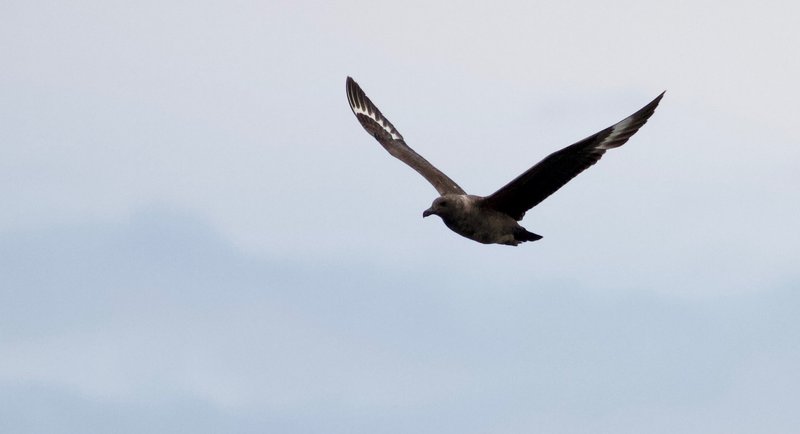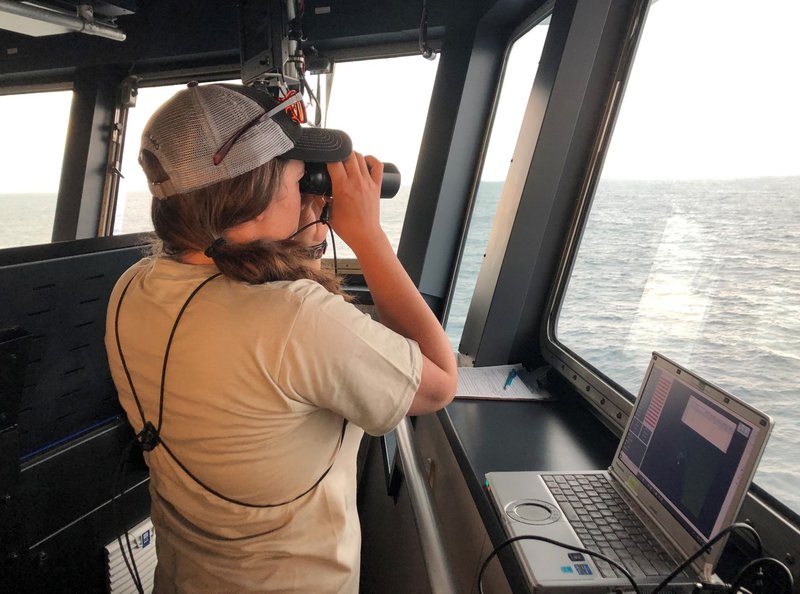
By Callie Gesmundo - U.S. Fish and Wildlife Service, Anchorage, Alaska
July 29, 2019
Ahoy from the bird group (population on board: 1) aboard the R/V Sikuliaq! I’m Callie, the seabird observer on board. The Gulf of Alaska is a sought after survey location for many seabird observers and bird enthusiasts; several seabird species rarely encountered in other Alaskan seas can be regularly found here, and even some rarer “non-Alaskan” species have been known to wander north into this area.

The South Polar Skua is a rare visitor in Alaskan waters. Image courtesy of Callie Gesmundo, U.S. Fish and Wildlife Service, Anchorage, Alaska. Download larger version (jpg, 773 KB).
I began surveys on July 21 and since our start, I’ve recorded 25 species of birds and 4 marine mammals, including multiple sightings of sperm whale. There is still a lot of sea to cover, but so far the most interesting discovery has been a South Polar Skua (Stercorarius maccormicki). Made obvious by its name, this individual is a long way from home! Skuas share a genus with jaegers, the more commonly encountered Stercorarius in Alaska, and both are closely related to gulls (and within the same family, Laridae).
The South Polar Skua nests in the Antarctic, but visits North American waters during the southern hemisphere winter; however, they typically don’t travel as far north as Alaska, making this one of a handful of documented records from Alaska. Both skuas and jaegers are primarily oceanic, coming only to land for breeding. While on land, they are predatory, feeding on smaller birds, bird eggs, and small mammals such as lemmings. However, the majority of their lifecycle is spent at sea, and here they practice an interesting foraging strategy called ‘piracy.’ Instead of hunting for themselves, they attack other birds carrying food, forcing them to drop their prey, and quickly snatch the food for themselves.

Callie Gesmundo is spending long hours on the ship’s bridge observing seabirds and marine mammals. Image courtesy of Katrin Iken, University of Alaska Fairbanks. Download larger version (jpg, 732 KB).
I expect to encounter a few more species as we continue our expedition south, and if I’m lucky, maybe another rare wonderer like the skua. I look forward to the days ahead, and hope for calm seas and good birds! Happy exploring!